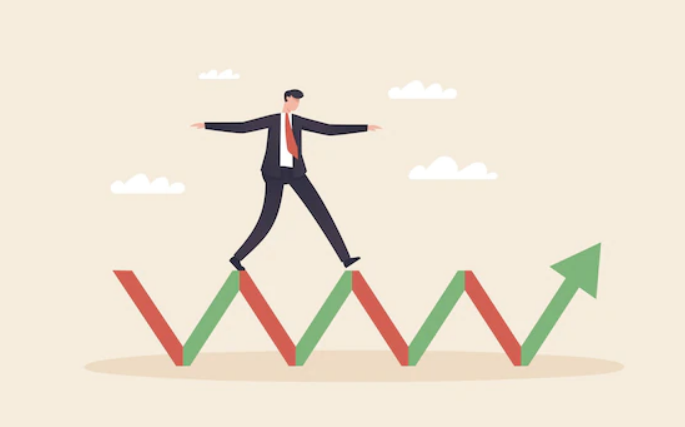
Haiden Holmes
Mar 24, 2022 16:08

Bonds, the bond market, bond yields, and the yield curve are all significant parts of the financial markets that every trader should be familiar with. Whether you are a bond trader or not, knowing the dynamics of the bond market may give a better knowledge of almost every other market on the earth.
Let me begin by answering the question, "What is a bond?" A bond is a pledge or guarantee made by one person or organization to repay a debt that may be purchased and sold by the general public. In essence, it is a mechanism for the seller to borrow money and the buyer to lend money. Bonds may be issued by almost any form of organization, although they are most typically used to raise substantial sums of cash by governments and enterprises.
In exchange for a loan, the bond issuer undertakes to pay the bondholder a set amount of interest at the time of the exchange.
Governments and corporations often need to borrow more money than is available via typical banking channels. They utilize public bond markets to raise this money, allowing them to tap into a wider liquidity pool. Bonds are purchased by investors in exchange for interest payments over time or at maturity. The amount of interest paid by the issuer and received by the owner is determined by a variety of variables, including the issuer's credit rating, interest rates, and demand.
Bond credit ratings are similar to personal credit scores in that they are a measure of the bond issuer's capacity to repay the obligation. Rating organizations such as Moody's and Standard & Poor's offer ratings ranging from Investment Grade to Junk. Investment Grade bonds have the lowest risk and the lowest possibility of default, whilst Junk bonds have the greatest risk. A larger risk of default translates into a higher interest rate for the borrower, the bond issuer. This is excellent news for bonds since it offers a greater rate of return.
Investors wanting safety may accept lower returns for guaranteed investments and limit their assets to investment-grade bonds.
Demand, like any other trade asset, may influence a bond's cost/return ratio. Because bonds are usually issued in batches, the quantity of debt available for purchase by investors is restricted. If there is adequate demand, the cost of ownership will rise, lowering the effective yield. This is terrible news for bond investors, but excellent news for the issuer since it reduces their borrowing costs.
Interest rates are significant for bonds because they impact the cost to issuers and the return to investors. Bond trading is difficult since interest rates fluctuate over time, which means there are times when you want to be a seller of bonds and other times when you want to be a buyer of bonds.
The prime rate or base rate maintained by the central bank of the nation in which the bond is issued is the key driving factor behind this. Bond rates tend to rise when the prime rate rises, and bond rates tend to fall when the prime rate falls. When the central bank is in the process of modifying its policy and adjusting the prime rate, bond dealers have a hurdle.
In order to ensure economic stability within their individual countries, central banks adjust their prime rate objective up and down. When economic activity is too high, the cost of borrowing money rises, making it more difficult for enterprises to borrow. If activity is too low, the rate is reduced in an attempt to boost corporate investment and capital market movement. When interest rates are low, savvy investors may sell bonds short and then purchase them back when rates are high, earning on the cost of the bonds while receiving interest payments in the interim.
Inflation is the most important instrument that central banks use to gauge the economy and decide the course of their policy, whether interest rates are increasing or lowering. Inflation is a measure of price rises over time that may be applied to a variety of economic variables. Business and consumer inflation are the two most widely watched. To that aim, the Producer Price Index and the Consumer Price Index are two of the most closely watched inflation statistics.
The Consumer Price Index, or CPI, is by far the most significant of the two. Consumers are at the heart of the contemporary economy. While producer prices may bleed over to consumer prices, if consumer prices get too high, an economy would collapse. The Personal Consumption Expenditures Price Index, or PCE, is the preferred measure for evaluating consumer-level inflation in the United States. It is published once a month and is included in the quarterly GDP report.
In terms of inflation, most central bankers advocate a goal of 2.0 percent for consumer-level inflation. This indicates that when CPI or PCE prices are less than 2.0%, central banks tend to be "accommodative" toward their economies, easing policy by decreasing interest rates. When the CPI or PCE exceeds 2.0%, central banks tighten policy by hiking interest rates.
Inflationary pressures are heavily influenced by labor statistics. To begin with, no economy can run if its people are not working. At the very least, the FOMC is tasked with two duties, one of which is to maintain maximum employment. In this context, figures such as nonfarm payrolls, unemployment, and average hourly wages become crucial. The FOMC confronts a challenge in that strengthening labor markets may lead to greater wage inflation.
The alpha and omega of bond trading are economic activity and economic activity. When economic circumstances are favorable, capital markets are active; when economic conditions deteriorate, capital markets dry up and bonds become more difficult to issue. The implication is that central banks are attempting to alter economic circumstances via interest rates. When things are terrible, interest rates decrease; when conditions improve, interest rates climb until the economy recedes. Understanding the ebb and flow of the bond market and bond trading is critical to bond trading success.
According to Learn Bonds, when the economy is doing poorly and the stock markets are very volatile, investors prefer to shift their assets to fixed income instruments, which increases bond market activity. However, this is not always the case. High volatility may tempt investors to engage in short-term trading using online trading platforms. This allows them to profit from both sides of the market without having to own equities for extended periods of time.
There is an infinite amount of bonds, but not all of them are the same. When it comes to bonds, U.S. Government Treasuries are the safest, most trustworthy, and most keenly scrutinized. Treasuries in the United States are issued in a range of maturities ranging from a few weeks to thirty years. The yields on each maturity vary owing to the desire for time-frame, either long or short-term investment, and may be examined for market mood.
In good times, the spread of yield grows as you go farther out. This is known as the yield curve. This is because investors expect that interest rates will rise in the future and do not want to lock in a low yield for an extended period of time. As a consequence of this phenomena, there is a greater demand for shorter-maturity bonds and a "normal" yield curve. That everything changes in hard times. Bond investors expect interest rates will fall in the future, so they want to lock in the higher rate for a longer period of time. This increases demand for longer-maturity bonds and signals a yield-curve inversion.

Mar 24, 2022 16:05

Mar 24, 2022 16:11